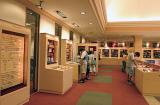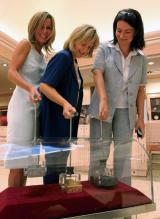2025. November 7. Friday
Visitor Centre of the National Bank of Hungary - Budapest

|
Address: 1054, Budapest Szabadság tér 8.
Phone number: (1) 428-2751
E-mail: sajto@mnb.hu
Opening hours: Closed!
|
The Visitor Centre is an exhibition focusing on the areas, concepts and deices closely related to the Bank's activities. The Centre covers a wide range of apparently very different topics whose central unifying theme is (what else could it be?) money. The exhibition begins by describing how money developed over the ages, what notes and coins are in circulation and how they are protected against counterfeit. It also includes a display of exotic banknotes, commemorative coins and other special money from all over the world.


